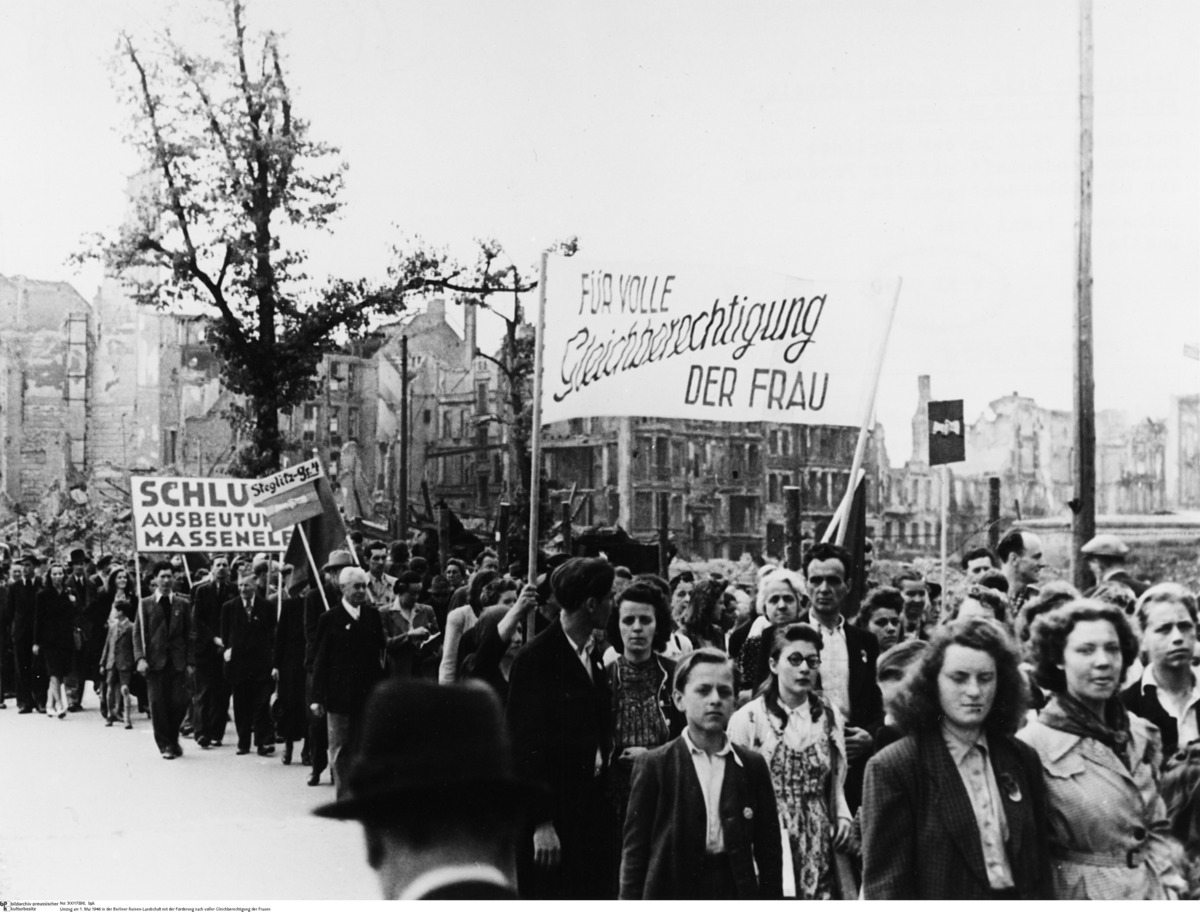Abstract
According to the Soviet zone newspaper
Neues Deutschland, more than 500,000
people took part in the May Day rally on May 1, 1946, including many
women who – like those shown in the picture – gave voice to their demand
for full equality. (The sign in the foreground reads: “For the full
equality of women.”) Käthe Kern, a member of the SED executive board,
spoke at the rally: “We women must make our own contribution to
achieving full equality. The women who have proven their worth in
rebuilding the country also have the right to claim full recognition of
their equal labor.” Although the SED promised equal status for women, it
robbed many of their political rights as it expanded the party
dictatorship: anti-fascist women’s committees were dissolved in 1946 and
were replaced on March 8, 1947, with the officially non-partisan
Democratic Women’s League of Germany
[Demokratischer Frauenbund
Deutschlands]. Instead of representing women’s specific interests,
though, the league eventually became a mass organization that served as
a conduit for SED policy. As early as 1950, the GDR revised marriage and
family laws to accommodate working mothers. The GDR opened up
opportunities in higher and vocational education in a push for broad
female participation in the labor force, which helped further gender
equality.
